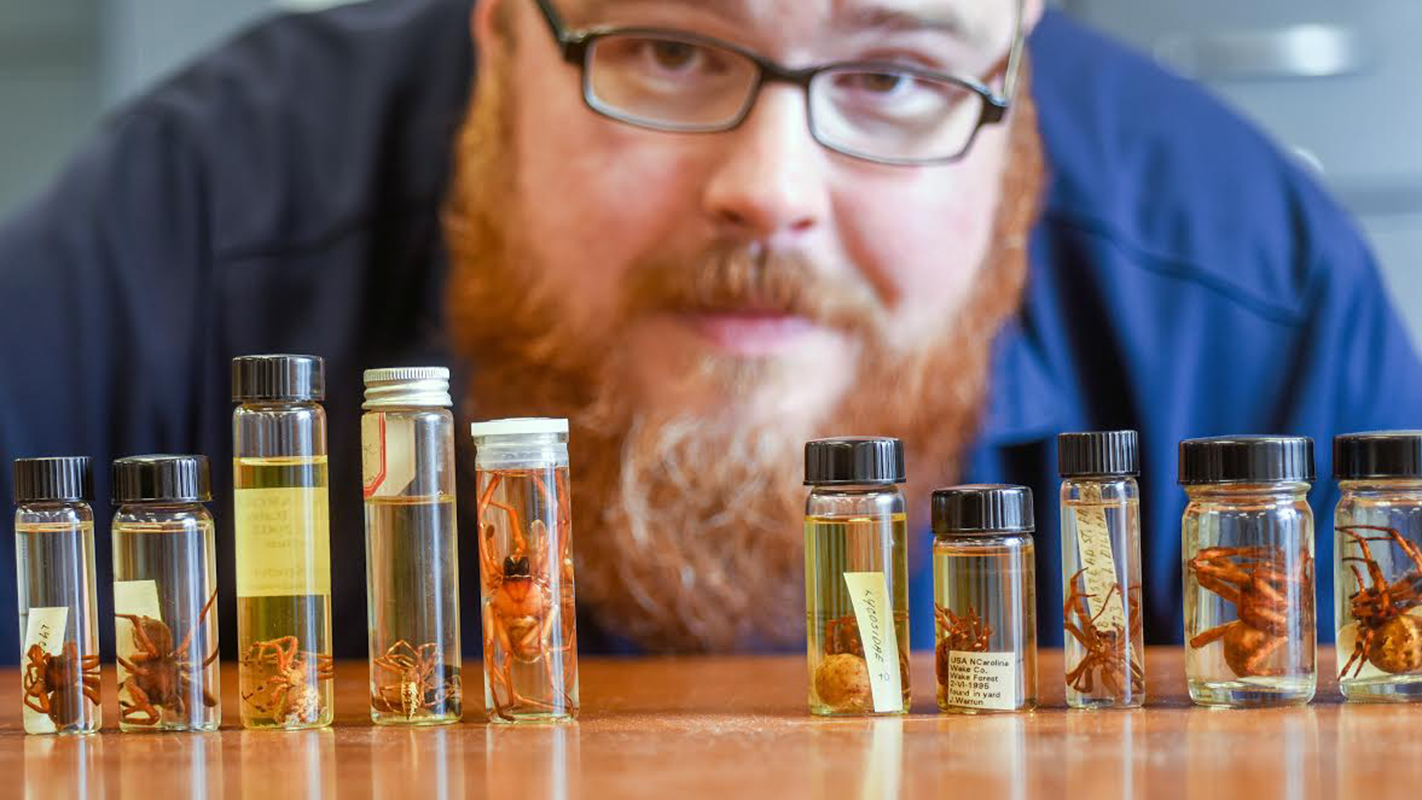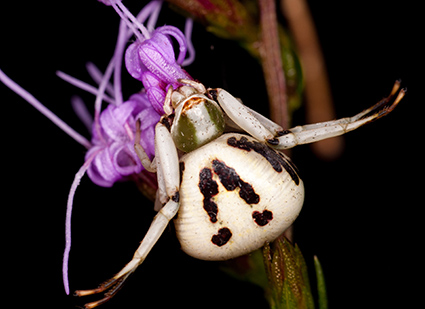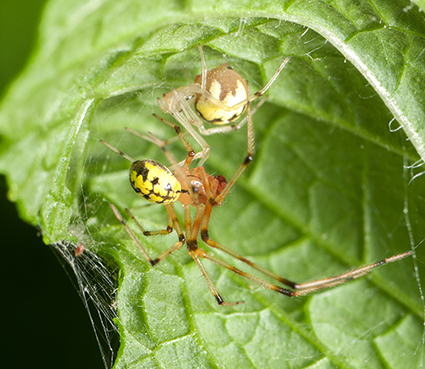Spiders: How Spooky Are They?

Editor’s Note: this is a guest post by Dee Shore, in the communications office of NC State’s College of Agriculture and Life Sciences.
Spooky scenes of fake spiders in giant webs are everywhere this time of year. But despite the Halloween hype, spiders hardly deserve their reputation as dangerous creatures, says NC State University entomologist Matt Bertone.
Through his job with the university’s Plant Disease and Insect Clinic, Bertone regularly comes face-to-face with many different types of spiders. Most of the people who use the clinic are farmers, gardeners and North Carolina Cooperative Extension agents who want to know what disease or insect is causing crop and plant damage. However, homeowners, doctors and others concerned about spiders and spider bites frequently turn to him to get proper identifications.
In addition to being a university Cooperative Extension scientist, Bertone is also an accomplished photographer who enjoys getting close to spiders and insects that he finds not only fascinating but beautiful.
Here, he answers a few spider-related questions.
The Abstract: What do people ask you about spiders?

Matt Bertone: “A lot of people are worried about dangerous or venomous spiders or foreign spiders. People will contact us if a spider bites someone and they want to make sure it’s not a brown recluse,” he says. “But it’s almost always not. Brown recluse spiders are probably the most feared spiders, but they are also among the ones least likely to be encountered here.”
In North Carolina, brown recluses are native to only the western tip of the state. “Sometimes people inadvertently bring them into the state, and they end up living in homes,” he says. “But they are very, very rarely encountered in North Carolina.”
TA: Are black widows and brown recluses the only venomous spiders found in North Carolina?
Bertone: “Almost all spiders that you encounter have venom, but for a spider to be dangerous, it has to have fangs large enough to pierce the skin. Many spiders have fangs that are just too small. And for many spiders, if they were able to pierce the skin, the reaction to the venom would be like a mild bee sting,” Bertone says.

As a child, Bertone was bitten by a wolf spider that he’d grabbed out of a bucket of water. But he says that spider bites are “actually extremely rare.” That’s because spiders tend to run away from people and only bite if they feel threatened.
“People like to blame every red, bite-like thing they see on their skin on spiders, but chances are it’s some other kind of skin infection or in-grown hair or something,” he says.
In the rare case when a spider does actually bite a person, it’s even more rare for the bite to be fatal, Bertone points out, even if the bite is from black widow or brown recluse. (Of course, people who think they’ve been bitten by one of these venomous spiders should do their best to collect the spider for identification and seek medical attention.)
TA: You say that spiders are beautiful, but are there any that you find even the least bit spooky?
Bertone: “Yes, the net-casting spiders. They are also called ogre-faced spiders. These spiders spin rectangular webs that they hold in their front legs, then they look out with these huge eyes, and when they see prey, they use the net in their legs to catch the prey,” he says. “I have yet to see one, but I really want to. They creep me out a little bit, but they are really cool.”
TA: It’s been said that no one is ever more than 10 feet from a spider. Is this fact or fiction?
Bertone: “It’s not true, but it’s also not far-fetched,” Bertone said. A few years ago he worked on the Arthropods of Our Homes project, going into 50 houses to catalog every insect, spider and related creature he could find. Spiders turned up in every single home! And cobweb spiders were found in 65 percent of rooms.
“Basically, the majority of the rooms in a home have at least one spider, living or dead,” he said. “That might be scary to some people, but I say the fact that people don’t even realize that just goes to show that spiders don’t interact with people much. They are leaving us alone, and we are leaving them alone.”
To find out more about spiders in and around the home, check out the online information sheet provided by the university’s North Carolina Cooperative Extension Service at http://go.ncsu.edu/spiders.
- Categories:


